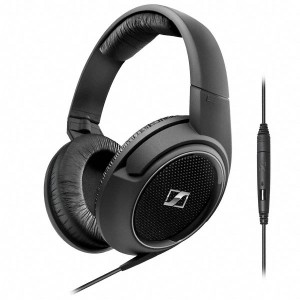Sennheiser’s five wisdoms about forecasting
| Sennheiser has discovered that the large majority of its products can be forecast accurately based on statistics, which enables the company to direct its attention towards the critical products. “over the past year we’ve integrated our forecasting process with the financial planning,” said Ulf Gerkens, head of supply chain planning at the german manufacturer of audio equipment.
Sennheiser has discovered that the large majority of its products can be forecast accurately based on statistics, which enables the company to direct its attention towards the critical products. “over the past year we’ve integrated our forecasting process with the financial planning,” said Ulf Gerkens, head of supply chain planning at the german manufacturer of audio equipment.
By Marcel te Lindert, translation by Lynn Radford
During the annual S&OP conference organised by Marcus Evans Conferences in Amsterdam, Gerkens summarised his forecasting experiences in five wisdoms.
1.Forecasting is not about predicting the future, but rather about managing risks.
“The world is changing all the time, plus major disruptions are continually occurring which seriously alter our view of the future. And don’t forget that we can influence the future ourselves, such as through our decisions to develop new products or enter new markets,” commented Gerkens. Summing up: the future can take us in various directions. It’s our job to be prepared for that.
2. In most cases the future is little more than a repeat of the past.
In other words: use statistics wherever possible. “In our experience, we can generate a good statistical forecast that couldn’t be improved by any form of human intervention for 80 to 90 percent of our products. That’s especially true for items for which plenty of data is available, such as when they have been ordered a lot. It also applies to products that are in the middle of their life cycle and therefore not suffering any phasing-in or phasingout problems. After all, products that are at the beginning or end of their life cycle can be significantly impacted by decisions of just a handful of employees or customers,” stated Gerkens. He shared some important advice with the audience: “Make someone responsible for the statistical forecasts and never let anyone alter the figures.”
3. The people who know what the future holds refuse to tell you.
These are the people from Sales who can influence sales patterns through their own actions and know which deals, projects and tenders are in the pipeline. Gerkens: “But if we ask them to provide input, it makes them feel uncomfortable. After all, all those deals, projects and tenders might come to nothing. If there’s one thing that salespeople don’t want, it’s to be held accountable for missed opportunities.” To avoid this pitfall, the keyword is ‘trust’. For example, you could reward salespeople for the orders that are despatched rather than the orders that are placed. Don’t punish them for missing out on a deal that they’ve told you about. “And keep reminding them that the supply capacity is limited and that Sales can only pull off a big order if the Supply Chain department also knows about it,” was Gerkens’ tip.
4. A forecast is always wrong; what matters is to understand how far wrong it is.
“The forecast tells us how much stock we need to keep in order to meet demand. The more accurate the forecast is, the better we can align inventory levels with the service level agreements,” said Gerkens. Another speaker, from Infineon, provided a mathematical formula for that during the event: if the forecast accuracy is 80 percent, it’s necessary to build 20 percent flexibility into the supply chain.
5. Rather than predicting the future, we want to influence it.
Sennheiser chose to integrate the sales forecast with the financial forecast. Sales, Supply Chain and Finance ultimately all make use of the same figures: the margin per product multiplied by the number of items sold provides insight into the total margin. “In addition, work on scenario planning. Develop longterm scenarios with different product portfolios and different pricing strategies. And make sure that you sell what you have; make overstock visible and encourage Sales to sell that first.”
No comments:
Post a Comment